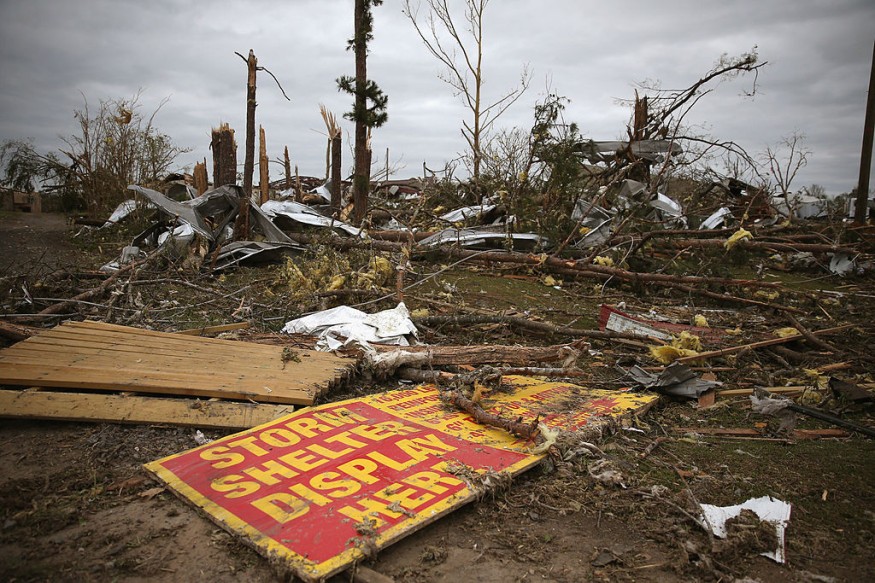Tornadoes wreaked havoc in the states of Texas and Oklahoma on Monday, March 21.
The windstorms caused some airports to close as damaging winds uprooted trees and damaged properties, including houses.
Combined with severe thunderstorms, one person died and seven others were injured in Texas.
Twisters, the rotating vortex of air, is one of the deadliest natural phenomena in the US.
This March, several US tornado forecasts revealed that both short-term and long-term timelines will put the US under increased risk from tornadoes in terms of coverage, duration, and frequency.
Multiple Casualties

At least 20 tornadoes reportedly occurred across Texas on Monday, affecting the areas of Crocket, Jacksboro, Madisonville, Bowie, Elgin, and Rock Round.
The twisters also rampaged through Kingston, Oklahoma, as per NBC News.
A woman was killed at her house in Sherwood Shores, Texas.
Meanwhile, dozens of injuries were also reported, and widespread power outages affected thousands of homes in Arkansas, Louisiana, and Texas.
An ongoing storm system paved the way for severe weather to cause the formation of tornadoes in the Southwest.
Furthermore, the US weather authorities have issued a forecast predicting that the current system will continue to cause weather hazards in the coming days.
Regional Severe Weather Outbreak
The National Oceanic and Atmospheric Administration (NOAA) - National Weather Service (NWS) issued a regional severe weather outbreak that is expected to affect states in the Southern US, including the Lower Mississippi Valley and the middle Gulf Coast from Tuesday, March 22.
The NOAA - NWS emphasized that tornadoes and potentially damaging winds will pose the highest weather hazards from the severe weather.
Moreover, heavy rain will also bring the risk of flash floods in urban areas and river flooding.
The US weather agency's Storm Prediction Center (SPC) specified that most of Mississippi, southern and eastern Louisiana, and western Alabama are expected to experience severe thunderstorms until Tuesday evening.
Furthermore, some winds with hurricane forces, a few tornadoes, and large hail may occur.
Storm Preparedness Actions
The SPC issued the following several storm preparedness actions to mitigate or avoid the lethal repercussions of the regional severe weather outbreak, which is caused by an ongoing storm system:
- Review severe weather safety procedures
- Monitor local weather reports, including watches and warnings from the NOAA Weather Radio
- Move to a safe place, preferably on the lowest floor of a building
However, the given disaster preparedness measures are not absolute.
Depending on the current situation it is still in the discretion of an individual on whether to follow or not actions.
Increasing Tornado Risks
The tornado outbreaks in Texas and Oklahoma were preceded by some forecast of the increasing risks posed by the twisters or windstorms across the country in the coming months.
On March 19, US meteorologist Paul Pastelok from AccuWeather issued a long-term tornado warning, indicating that there are signs that climate change, including variations in weather and climatical patterns, will increase the tornado "threat area" expansion in the country.
This means that tornado outbreaks in the country's Tornado Alley regions of the Midwest and Southeast can also occur in other parts of the US.
The term Tornado Alley was coined by the media to depict the areas that experience the most tornado outbreaks.
AccuWeather meteorologists also previously issued a tornado forecast for the US in 2022, highlighting that an increased tornado occurrence is expected for March, April, and May.
It also added to the common frequency of tornadoes during the spring season which started on Sunday, March 20.
© 2025 NatureWorldNews.com All rights reserved. Do not reproduce without permission.

